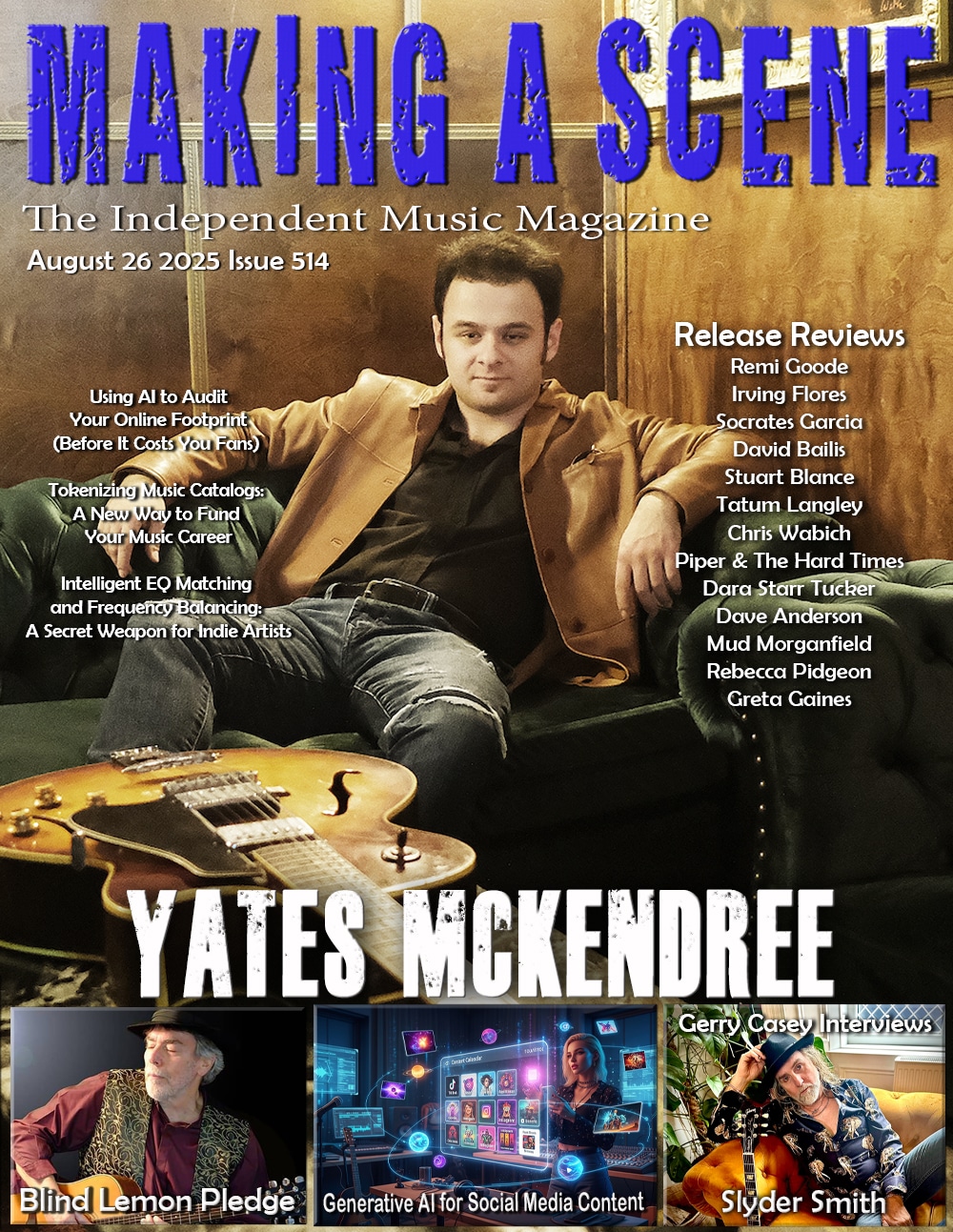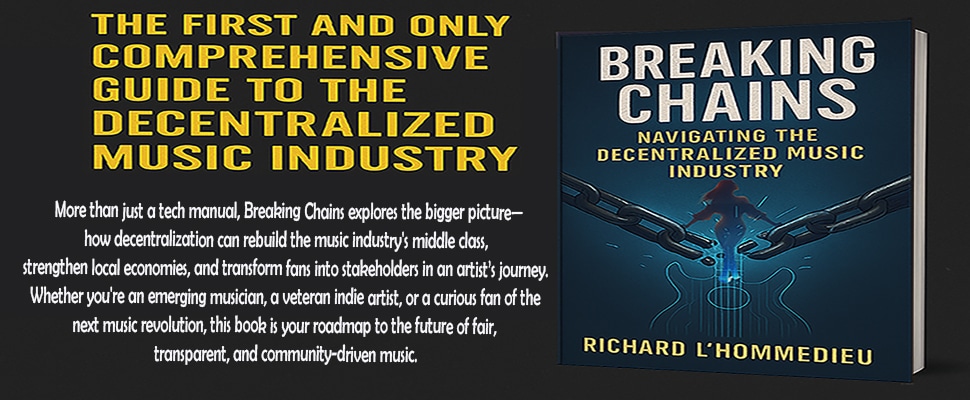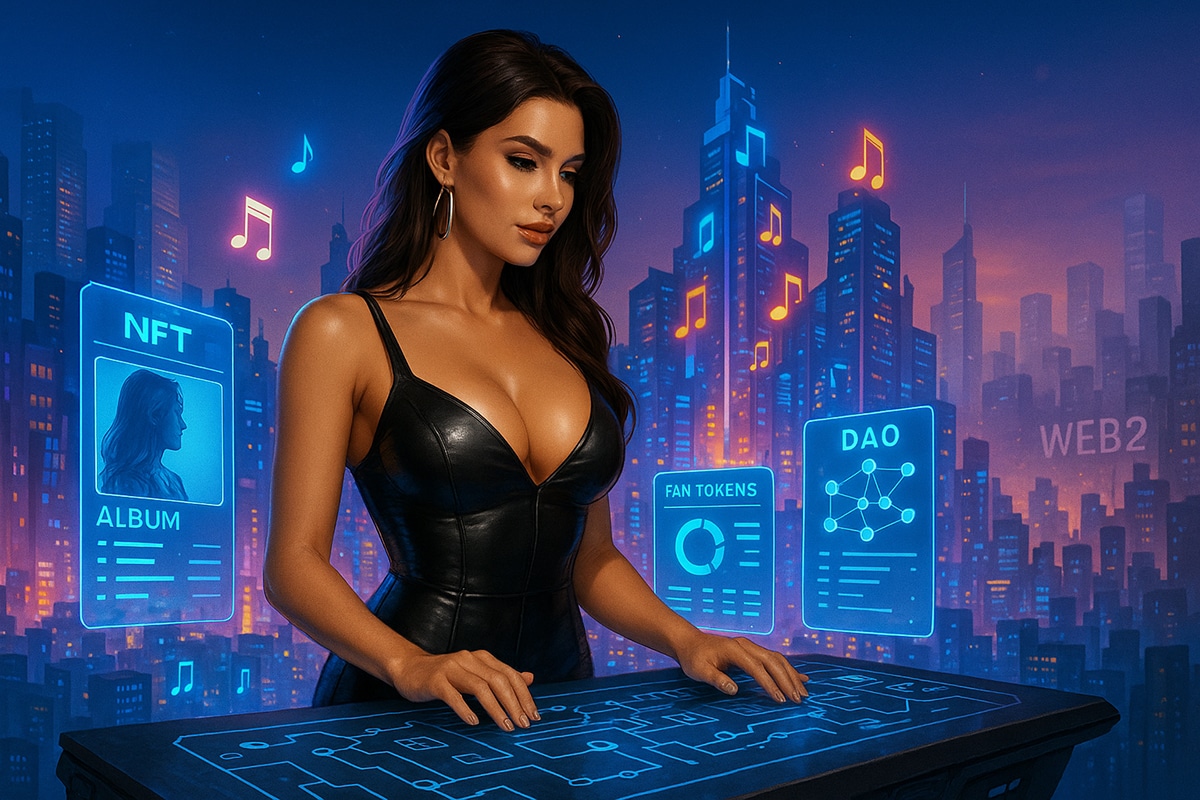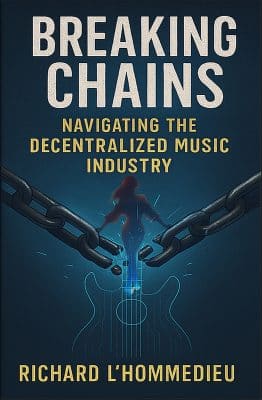From Bandcamp to Blockchain: How to Evolve Your Digital Storefront for Web3
From Bandcamp to Blockchain: How to Evolve Your Digital Storefront for Web3
A step-by-step guide for indie artists ready to future-proof their fan economy.
If you’re an independent artist, chances are you’ve used Bandcamp—or at least considered it—as your go-to digital storefront. For years, Bandcamp has been one of the few platforms that actually respected the artist. It let you set your own prices, sell merch and music directly, and keep a decent cut. It felt like a breath of fresh air in a world dominated by streaming pennies and invisible algorithms. But let’s face it: even Bandcamp is part of the Web2 ecosystem. That means you’re still relying on someone else’s platform, and still playing by rules you didn’t write.
Now, a new opportunity is opening up—one where you own the rules, the platform, and even the relationships with your fans. That opportunity lives in Web3, a decentralized and creator-first internet built on blockchain technology. This isn’t just the next Bandcamp. It’s a completely different mindset: one where music becomes a community-driven economy, not just a product for sale.
So how do you evolve from a traditional Bandcamp-style store to a fully-fledged, tokenized, on-chain storefront? Let’s walk through it—step by step.
Why Evolve from Bandcamp to Blockchain?
Let’s start with the “why.”
-
More Control: You own the smart contracts. You own the data. You control your income.
-
New Revenue Streams: NFTs, DAO memberships, and token-gated experiences let you monetize beyond just selling tracks.
-
Direct Fan Engagement: Blockchain tools create real communities—not just customers.
-
Future-Proofing: With Web2 platforms being bought and sold (RIP old-school Bandcamp), Web3 gives you permanence and freedom.
Step 1: Understand the Basics of Web3 Commerce
To start, you need to understand the core difference between Web2 and Web3. In Web2, platforms like Bandcamp, Spotify, or YouTube sit between you and your audience. They handle the infrastructure and take their cut, but they also control the data and own the relationship with your fans. In Web3, you become the platform. Thanks to blockchain technology, you can sell music directly, automate royalty splits, issue collectibles, and even build fan-run communities—all without asking anyone’s permission.
That might sound a little intimidating at first, but it’s really just a new toolbox. Instead of uploads and buy buttons, you’ll be working with things like smart contracts, NFTs, crypto wallets, and maybe even DAOs. Think of smart contracts like vending machines. You put in money, and they automatically deliver what’s programmed—whether that’s a digital download, a concert ticket, or a collectible piece of music history. NFTs aren’t just overpriced JPEGs—they can be songs, albums, concert experiences, fan memberships, and more. A crypto wallet is your backstage pass to this world. It’s where you store your music earnings, NFTs, and tokens. Platforms like MetaMask or Phantom make this easy to set up and use.
Before diving in, let’s define a few key terms:
-
Smart Contracts: Self-executing code on a blockchain. They automate sales, royalties, and permissions without third parties.
-
NFTs (Non-Fungible Tokens): Unique digital assets—music, artwork, videos—purchased and verified on the blockchain.
-
Token-Gating: Fans access exclusive content or experiences by holding a specific token (like a membership card).
-
DAOs (Decentralized Autonomous Organizations): Fan communities that help fund, vote on, and support artist projects.
-
Wallets: Digital “bank accounts” for crypto, NFTs, and tokens. Think MetaMask, Phantom, or WalletConnect.
These are the building blocks of your new storefront.
Step 2: Choose Your Blockchain Ecosystem
Once you’re comfortable with the basics, it’s time to choose the blockchain that’s right for your project. Ethereum is the most well-known and widely used, especially in the NFT space, but it can be expensive to use due to gas fees. Polygon offers a similar experience with lower costs, while Solana is known for its speed and growing music community. There are also newer, creator-focused networks like Zora that are built specifically with artists in mind.
You’ll need to decide which blockchain will host your new digital storefront. Consider:
-
Ethereum: The OG of smart contracts. Most NFT platforms run on it. Downsides? High gas fees.
-
Polygon: Ethereum-compatible but faster and cheaper. Great for eco-conscious artists.
-
Solana: Fast and low-fee with growing NFT/music communities (like Sound.xyz or FormFunction).
-
Zora Network: Built for creators with gasless minting and a focus on ownership.
Pick based on where your audience is or where the tools you need are already thriving.
Step 3: Set Up Your Crypto Wallet
Your wallet is your identity in Web3. You’ll need one to mint tokens, connect with platforms, and receive funds.
-
Recommended wallets:
Make sure to:
-
Write down your seed phrase (offline!)
-
Avoid clicking sketchy links
-
Use a secure password and two-factor authentication
Step 4: Choose a Tokenized Storefront Platform
After you’ve set up your wallet and chosen your blockchain, the next step is to pick the platform where you’ll build your storefront. This is the Web3 equivalent of Bandcamp—except instead of uploading tracks and waiting for sales, you’re minting your music as NFTs and engaging your fanbase directly. Platforms like Sound.xyz are tailor-made for music drops and let your fans collect your work as digital assets. Zora is another powerful option that lets you create your own store, set your rules, and even embed your drop into your own website. Bonfire and Decent.xyz offer more customizable experiences where you can blend music, video, and merch into a complete fan destination.
This is your new Bandcamp—on-chain.
Here are a few artist-friendly Web3 storefront platforms:
🎵 Sound.xyz
-
Music drops as NFTs
-
Collectors can comment (on-chain!)
-
Ethereum-based
🧱 Zora
-
Open-source platform to mint anything—music, art, merch
-
Build your own storefront on their protocol
-
No coding needed
🎟️ Bonfire
-
All-in-one creator hub for token-gated content
-
Drop music, merch, NFTs
-
Customizable landing pages
🎧 Decent.xyz
-
Helps with music NFTs and custom contracts
-
Royalty splits and on-chain metadata
-
Cross-chain functionality
Each platform has its vibe, so explore, compare fees, and see which aligns with your aesthetic and audience.
Step 5: Tokenize Your Music and Merch
Once you’ve chosen a platform, it’s time to tokenize your music. This is where things get fun. You’re not just releasing a track—you’re creating a collectible experience. You can mint a one-of-one song for a high-ticket collector or drop 100 limited-edition versions for your most loyal fans. You can add unlockable content like stems, handwritten lyrics, or behind-the-scenes videos. The entire transaction is stored on the blockchain, meaning it’s transparent, permanent, and transferable. That’s powerful.
Here’s how:
-
Create Your Asset
This could be a track, an album, artwork, a video, or even a backstage pass image. -
Upload and Mint
Use your chosen platform to upload your file and mint it as an NFT. Some platforms let you customize:-
Supply (1/1? Limited edition?)
-
Price (Fixed or auction?)
-
Unlockables (Add bonus stems, lyric sheets, or video)
-
-
Promote the Drop
Let fans know via socials, your mailing list, and Web3 platforms like:-
Mirror.xyz (blog on-chain)
-
Paragraph.xyz (token-gated newsletters)
-
Lenster (Web3 Twitter-like feed)
-
Step 6: Build Community with Token-Gated Access
You’re ready to mint.But the real magic happens after the sale. Web3 isn’t about one-time purchases—it’s about ongoing engagement. With token-gating, you can give your collectors access to exclusive content, secret Discord rooms, early merch, or private live streams. It’s like building your own VIP club, except the membership is tied to owning a piece of your music. This changes the relationship from fan-to-artist into something more collaborative and long-term.
Now that fans are collecting your music, give them more reasons to stay involved.
Token-gating ideas:
-
Exclusive livestreams
-
Discord rooms
-
Voting on merch designs
-
Early access to songs
Tools for this:
-
Guild.xyz – Discord-based access control
-
Bonfire.xyz – Custom pages and content
-
Tessera – Shared ownership experiences
This flips the old “fan club” into a decentralized artist-led community.
Step 7: Launch Your Own DAO (Optional, but powerful)
If you really want to take it to the next level, you can launch your own DAO—a decentralized autonomous organization. Think of it as a fan club with actual power. Your DAO could vote on tour stops, help fund music videos, or choose which demo to develop into your next single. DAOs run on tokens that act like voting shares. You can give them away with NFT purchases or sell them to raise funds. Tools like Aragon, Juicebox, and DAOhaus make it easy to set one up without needing to write a single line of code.
When you’re ready to take the next leap, launch a DAO for your project. Your fans become stakeholders in your career.
Here’s how:
-
Token holders (like your NFT collectors) can vote on proposals—what song to release, where to tour, even what videos to shoot.
-
Offer benefits like merch discounts, event invites, or revenue splits.
DAOs let fans become co-creators, not just customers.
Step 8: Accept Crypto (and Convert it if You Want)
Now, let’s talk money. Once people start buying your NFTs or joining your DAO, you’ll earn crypto instead of dollars. That might seem weird at first, but it’s easier than you think to convert it back to fiat. Services like Coinbase, Kraken, and Ramp let you “cash out” when you need to pay bills. Or, you can just spend crypto directly—many artists now use crypto debit cards that work just like regular Visa cards.
Now that you’re selling NFTs and collecting royalties, how do you get paid?
Platforms will send funds to your wallet. To convert to dollars:
-
Or, spend directly using crypto-friendly cards like Coinbase Card
Bonus: Some fans prefer paying in crypto. You’re meeting them where they are.
Want a Custom Web3 Storefront?
If you’re ready to take the leap and want a white-label NFT store or DAO-backed fan club, check out:
- Glass.xyz (for music videos)
It’s Not About Leaving What you Know—It’s About Expanding
You don’t have to abandon your old platforms entirely. Think of Web3 as an expansion pack, not a replacement. Just like a funnel marketing campain, you can use Bandcamp or Spotify to reach broader audiences, bring them into the top of your funnel, as they are distilled down into your superfans you can offer something exclusive to those superfans. A limited NFT drop, a gated video archive, or even co-ownership in your next album release. The key is that Web3 gives you leverage. It gives you tools to create deeper fan relationships and more sustainable revenue streams.
The bottom line is this: evolving your digital storefront from Bandcamp to the blockchain isn’t about tech hype—it’s about taking back control. It’s about owning your platform, your data, and your destiny as an artist. In Web2, platforms own your fanbase. In Web3, you do.
You’re not just selling music anymore. You are building a branding network, a world your fans can live in, support, and be part of. It’s not just about streaming anymore—it’s about sovereignty.
So if you’re ready to move beyond Bandcamp and embrace the future of direct-to-fan digital commerce, the path is open. The tools are here. The gatekeepers are gone. And your fans? They’re ready to follow you—on chain.
If you want to learn more about the Decentralized Music Industry and how you can prepare yourself for the future of the music industry pickup the new book “Breaking Chains – Navigating the Decentralized Music Industry” Available as Digital, Paperback and Hardcover!
Buy Us a Cup of Coffee!
Join the movement in supporting Making a Scene, the premier independent resource for both emerging musicians and the dedicated fans who champion them.
We showcase this vibrant community that celebrates the raw talent and creative spirit driving the music industry forward. From insightful articles and in-depth interviews to exclusive content and insider tips, Making a Scene empowers artists to thrive and fans to discover their next favorite sound.
Together, let’s amplify the voices of independent musicians and forge unforgettable connections through the power of music
Make a one-time donation
Make a monthly donation
Make a yearly donation
Buy us a cup of Coffee!
Or enter a custom amount
Your contribution is appreciated.
Your contribution is appreciated.
Your contribution is appreciated.
DonateDonate monthlyDonate yearlyYou can donate directly through Paypal!
Subscribe to Our Newsletter
Order the New Book From Making a Scene
Breaking Chains – Navigating the Decentralized Music Industry
Breaking Chains is a groundbreaking guide for independent musicians ready to take control of their careers in the rapidly evolving world of decentralized music. From blockchain-powered royalties to NFTs, DAOs, and smart contracts, this book breaks down complex Web3 concepts into practical strategies that help artists earn more, connect directly with fans, and retain creative freedom. With real-world examples, platform recommendations, and step-by-step guidance, it empowers musicians to bypass traditional gatekeepers and build sustainable careers on their own terms.
More than just a tech manual, Breaking Chains explores the bigger picture—how decentralization can rebuild the music industry’s middle class, strengthen local economies, and transform fans into stakeholders in an artist’s journey. Whether you’re an emerging musician, a veteran indie artist, or a curious fan of the next music revolution, this book is your roadmap to the future of fair, transparent, and community-driven music.
Get your Limited Edition Signed and Numbered (Only 50 copies Available) Free Shipping Included
Discover more from Making A Scene!
Subscribe to get the latest posts sent to your email.











